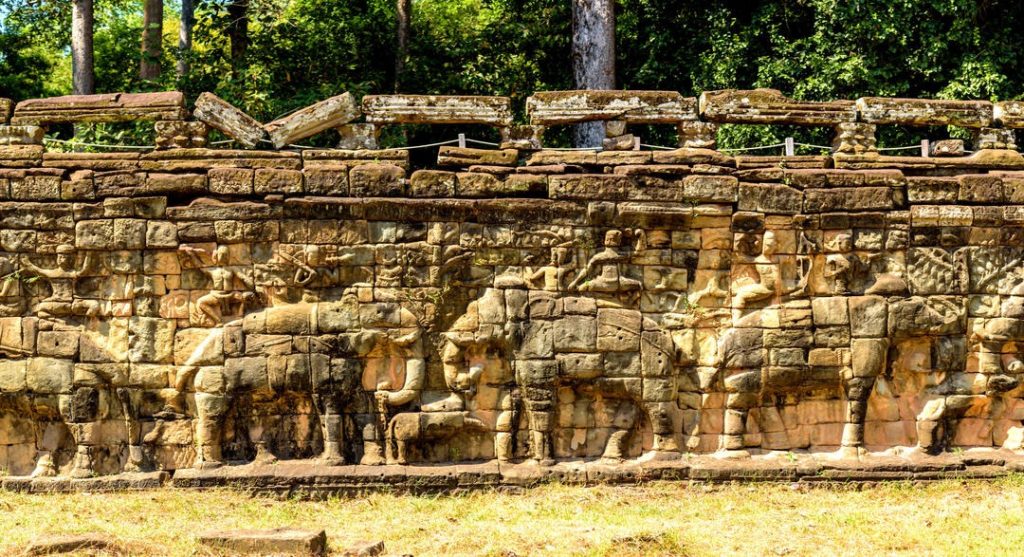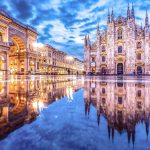When I visited the temples Of Angkor for the first time in 2008, I was totally passion with Angkor Wat. At that time, I had no idea how impressive the temples Of Angkor were in their entirety. One of the temples that immediately caught my eye was the famous and ornate Prasat Bayon. With its plethora of smiling and cold faces, this early thirteenth century stands at the center of the empire of the Buddhist king Jayavarman VII – the ancient capital Of Angkor Thom.
The massive stone walls (just as impressive from afar as up close) dominate the complex. When I first came back in 2008, I was able to explore Bayon without noticing a single other soul along the way. Nowadays it is one of the main package tourist attractions and the only way to have it for the most part alone is to get out of bed very early in the morning (departure at 5 am is recommended), while most tourist buses are parked in front of Angkor Wat at sunrise.
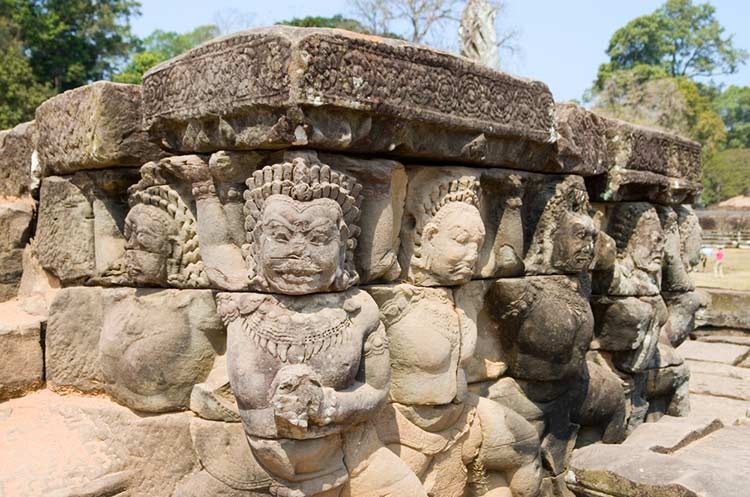
Visit of the temple of Bayon + the Terrace of the Elephants
Bayon is also known for its impressive relief sculptures representing a variety of different scenes and interpretations ranging from historical to mythological.
My second favorite Temple ruin in the walled city of Angkor Thom is the imposing Elephant Terrace. Formerly used as a terrace/platform to observe the triumphant victorious army of King Jayavarman, the size of this massive wall of 350 meters long is appreciated only by walking next to it. The wall is richly decorated with elephants, more visible to the naked eye from afar than up close.
Faces of Bayon: Temple of Angkor
History of the temple of Bayon
Nestled in the heart of Angkor Thom, the Bayon temple is a true architectural marvel of the Khmer Empire dating from the after twelfth century. Commanded by King Jayavarman VII, Bayon is not just any temple — it is the state temple of a once powerful empire, and its unique features distinguish it from the many wonders Of Angkor. What immediately attracts visitors are the 54 towers, each adorned with four massive and calm faces that look in all directions. These faces, which would represent either the Bodhisattva Avalokiteshvara or the king himself, seem to watch over the temple grounds with an enigmatic smile, creating an atmosphere of peace and spirituality.
A mixture of religions and cultures
The history of Bayon is as complex as its architecture. Originally built as a Buddhist temple, it reflects the devotion of King Jayavarman VII to Mahayana Buddhism. However, when the Empire returned to Hinduism under after rulers, Hindu elements were incorporated into the design of the temple. This mixture of religious influences makes Bayon a fascinating study of cultural and religious syncretism.
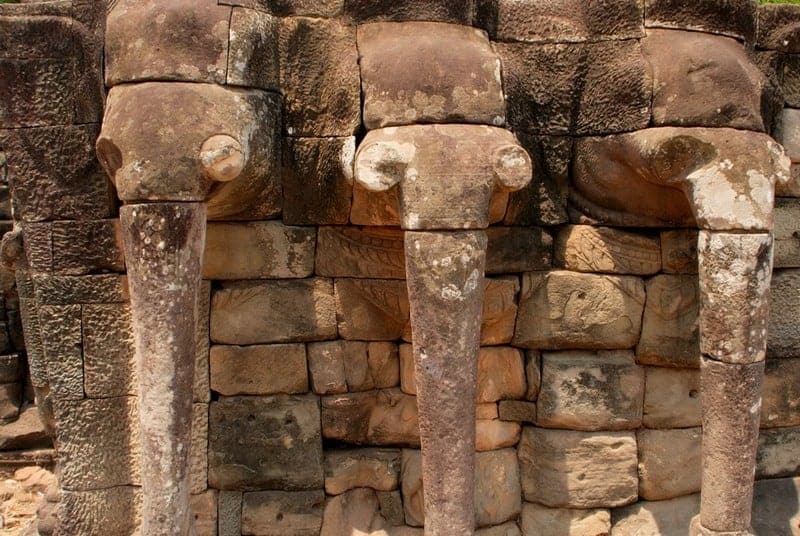
Buddhist foundations: The original design of the temple was strongly influenced by Mahayana Buddhism, as evidenced by the calm facial expressions and the numerous Buddha statues throughout the temple. These elements underline the king’s desire to present himself as a compassionate and wise ruler.
Hindu revisions: After the death of Jayavarman VII, after Bayon rulers added Hindu elements, including depictions of Hindu deities and mythological scenes. This multi-layered religious symbolism adds to the complexity and historical importance of the temple.
Bas-reliefs: stories carved in stone
One of the most remarkable features of Bayon is its vast bas-reliefs that cover the outer galleries of the temple. These sculptures offer a vivid and detailed account of the life and times of the Khmer Empire, from epic action to daily scenes of market life, fishing and festivals. The craftsmanship is incredible, with each panel offering an insight into the culture, beliefs and history of the Empire
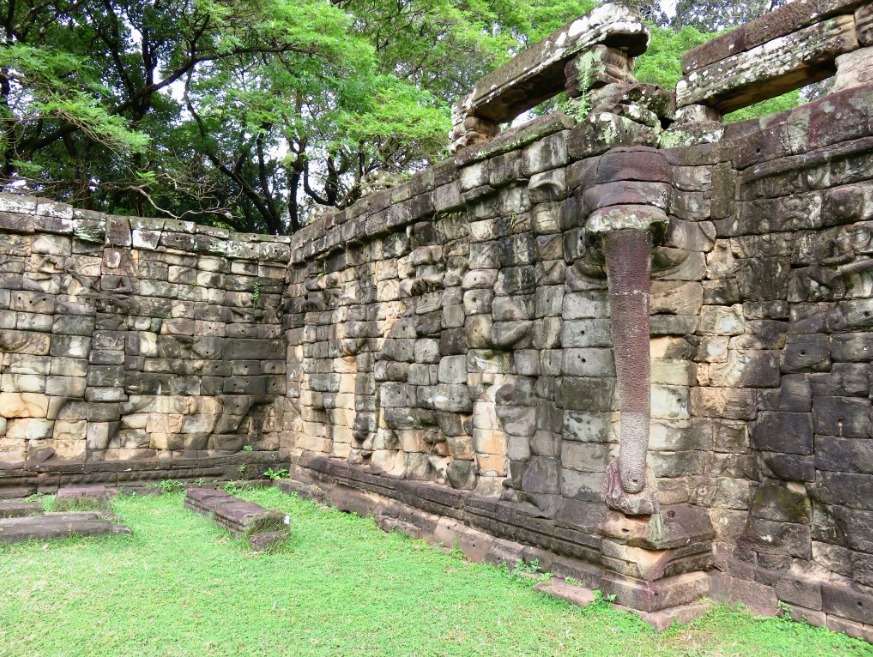
Scenes of everyday life: The bas-reliefs do not only concern major events; they also represent the ordinary life of the Khmers. You see scenes of bustling markets, people who like music and dancing and fishermen at work — each blackboard is a snapshot of a moment.
Mythology and war: intertwined with these everyday scenes are representations of epic action and mythological narratives. These sculptures illustrate not only the military power of the Khmer Empire, but also its rich tapestry of legends and religious beliefs.
